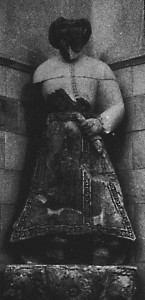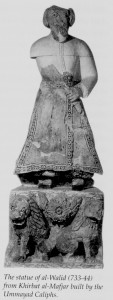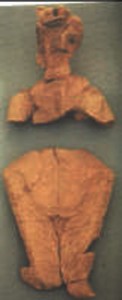SCULPTURE IN THE ISLAMIC WORLD
LIFE SIZE STATUES OF THE CALIPHS
A neglected research study

A hullabaloo has been created in the Islamic world. That Islam is against human imagery. When there is nothing in the Holy Quran and there is no injunction against it, then how comes this is taken as a factual supermacy? Take for instance the CALIPH COINS just a few decades after the Prophet. They reveal the Caliph of Islam on the coin itself. And the practice went on and on. Oleg Grabar gave us a fantastic study of this background and it is worthy to read him oneself. The most beautiful statement of Grabar is that the HOLY KAABA was a museum in itself, for that is where the Prophet (PBUH) instructed people to place the various artifacts collected from all over the world. Sources reveal that not only figurative painting but full size human sculptures were common in Islamic civilization and in every square in the great cities, the sculpture of the ruler was placed there. Wishful thinking! Absolutely not.
We had proof of this from various historical sources. For instance the people of SIND put a statue of MUHAMMED BIN QASIM in their city square, once he was gone. He was so much loved and cherished in the country he had conquered, not only by battles but also by the show of his heart and culture to people. Even the wife (also a sister) of Raja Dahir fell in love with Qasim and married him.The same thing gets repeated elsewhere.
Some time back German explorers took out the remains of ANCIENT MUSLIM CITIES LIKE SAMARA. In QASR el HEIR el GHARABI DANIEL SCHLUMBERGER has written DETAILS OF THE CITY. And behold a life size sculpture of the Caliph was found in the ruins. It is published but rare in view. We here present a first class view of same. As well as a view from another ancient Islamic city. These are very rare. Enjoy. Islam in ijjtehad is the most progressive way of life and says YES to culture, never negates it.



Writing book on FIGURATIVE ART IN ISLAM
Our information comes from Syria Jordan border, where we have extinct palaces like Qasr el-Hayr, Qasr Kharana, Qasre Amra, as well as Khirbat al-Mafjar. But hardly any study exist of the Sind area, although the statue of Muhammed bin Qasim is well recorded in history (Futuh ul Buldan by Misri). Interesting when the foundations of Baghdad was laid, Abu Jaffer Mansoor Abbassi , between the Jamia Masjid and the Palace, built an eighty yards high dome, at the top of which was a RULER ON HORSEBACK, probably the Caliph himself. It was an awe inspiring thing as recorded by historians